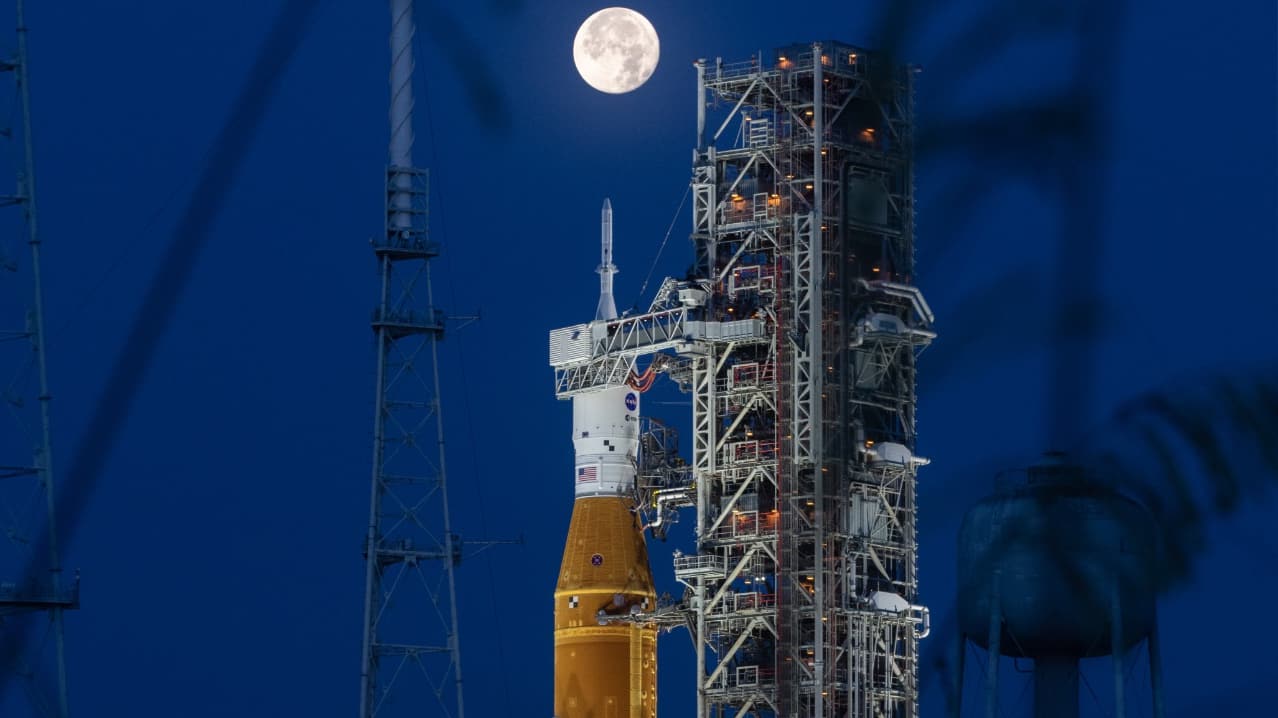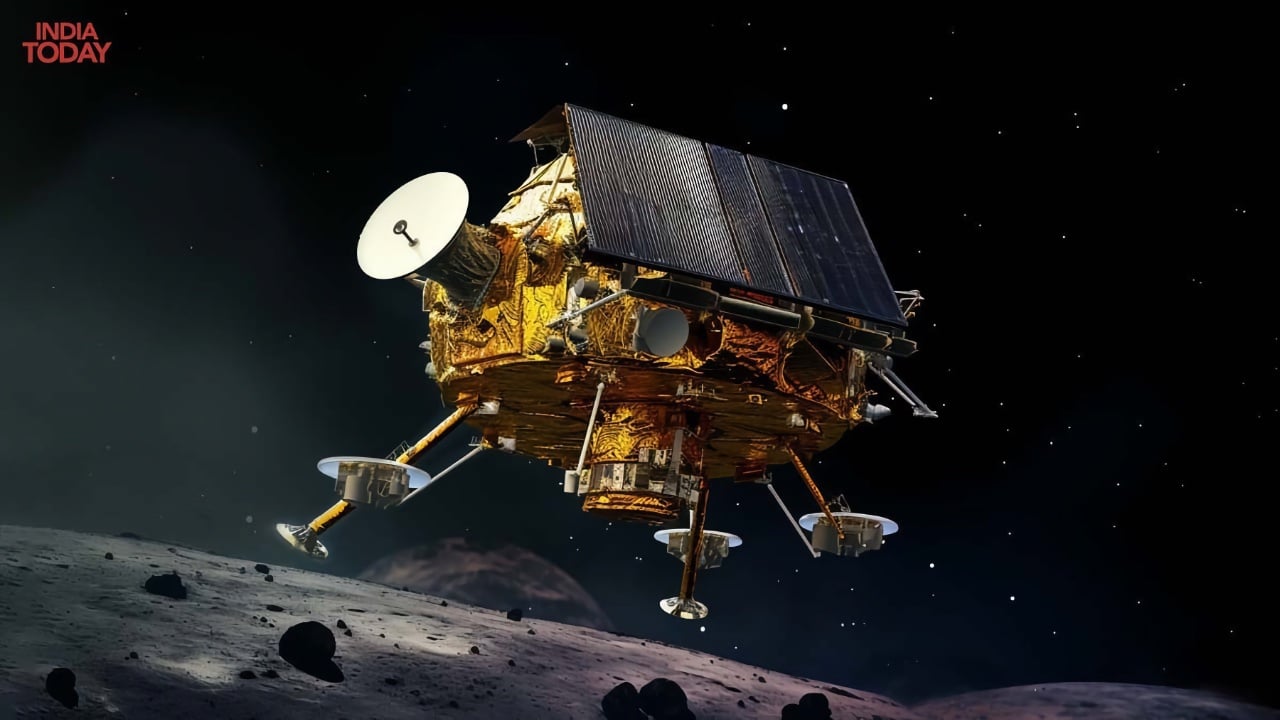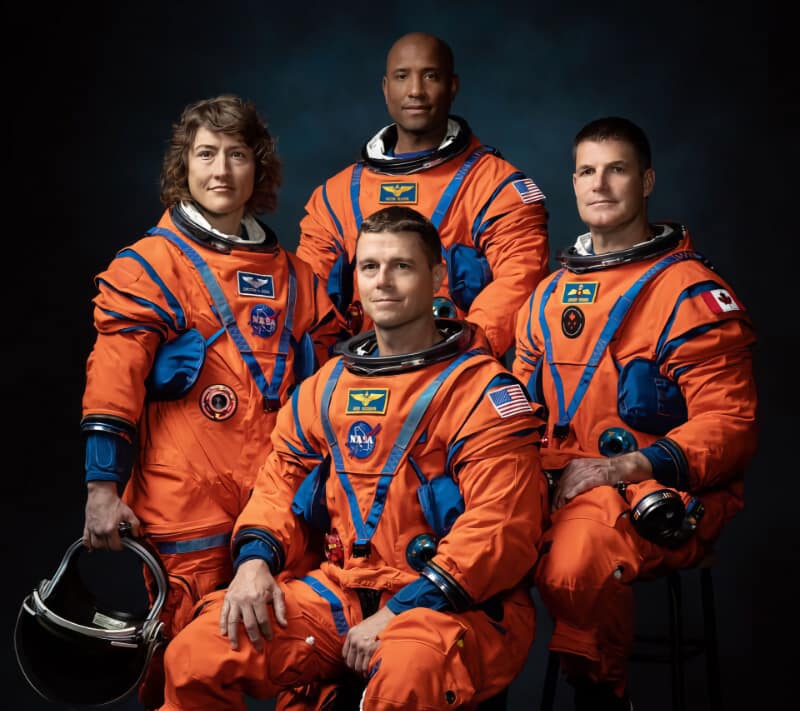
A whole host of new missions are heading to the Moon over the next few years, with it ever more likely that humanity will walk upon the surface of our nearest neighbour once more.
54 years ago today, Apollo 11’s Lunar Module Eagle landed in the Sea of Tranquility and Neil Armstrong famously became the first person to walk on the Moon’s surface. Over the course of the next three and a half years, another five missions and 11 astronauts — all men — would do the same before we finally left our nearest celestial neighbour to its peace on December 14 1972.
Its doubtful that anyone would have guessed it would take over 50 years to go back, but heading back we are as a whole tranche of crewed and uncrewed projects are planned for the next few years. It’s taken a long time, but suddenly lunar exploration is hip again. Here’s what’s coming up.
Uncrewed projects
The new rush to the Moon is led by the Indian Space Research Organisation’s Chandrayaan-3 mission, which successfully launched from the Satish Dhawan Space Centre on 14 July. It’s currently running through a sequence of orbital manoeuvres to escape the Earth’s gravity well and head for the Moon where it is scheduled to land the Vikram lander at some point after 23 August.

An artist's impression of India's Vikram lander. Pic: India Today
If all goes well — and it didn’t for Chandrayaan-2 which crashed and was destroyed on landing in 2019 — the landing will make India the fourth country to successfully land a mission on the lunar surface, after Russia, the US, and China (a United Arab Emirates mission was destroyed on impact in April). Rather more uniquely it will be the first to land near the south lunar pole, a region which has been so far left largely untouched but which planetary scientists believe could hold the reserves of water necessary for longer term lunar exploration.
[Update: To some awesome scenes of jubilation across India, Chandrayaan-3 successfully landed on the Moon on 23 August.]
Next on the list is the long-delayed Luna 25, a Russian mission which is cloaked in rather a lot of secrecy but which looks to be looking to launch in the first half of August. Luna 24 launched as far back as 1976, so this is another country heading back to the Moon after a long hiatus though, of course, that previous mission was under the auspices of the Soviet Union.
[Update: The Luna-25 craft crashed into the moon on August 20 after it spun into an uncontrolled orbit, according to Russia’s space corporation, Roskosmos.]
Japan is also prepping a mission that will launch towards the end of August. The SLIM mission (Smart Lander for Investigating Moon) is actually a couple of years late, its launch postponed by delays to its rideshare, the X-Ray Imaging and Spectroscopy Mission. One of the main goals of SLIM is to demonstrate the Japan Aerospace Exploration Agency’s precision landing technology, which has been developed from facial recognition systems to recognise where it is from the lunar landscape below.
NASA has three missions ready to fly under the aegis of its Commercial Lunar Service Payloads program (ie we pay you for space on your lander). 14 companies are now part of this scheme, with three launches planned for this year, one from Astrobiotic, and two from Intuitive Machines.
Astrobotic will deliver NASA payloads to Sinus Viscositatis, a mare unit adjacent to the Gruithuisen Domes, a geologic enigma; while Intuitive Machines will deliver NASA payloads to a site near the Malapert A crater in the south polar region, and also deliver the agency’s PRIME-1 drill to the lunar south pole where Chandrayaan-3 is heading. A further five missions are scheduled to the end of 2026.
Crewed missions
Of course, by 2026, if all goes well NASA will already have landed people on the Moon once more.
Artemis 1, launched by the enormous SLS rocket, successfully sent an uncrewed Orion capsule to lunar orbit and back late last year. The next mission, Artemis 2, is scheduled to launch a crew of four astronauts around the Moon sometime around late 2024 and the first half of 2025, looping them round the Moon 6000 miles from the surface before heading back to Earth for re-entry.
The crew for that mission has already been announced and, if all goes well (that phrase again), they will be followed by Artemis III which will aim to land two astronauts on the Moon in a Space-X Starship lander in a timeframe currently given as late 2025 or 2026. Again, that mission is currently targeted at the south pole.

The crew for Artemis II: NASA astronauts Reid Wiseman (bottom), Victor Glover (top), and Christina Hammock Koch (left), and CSA astronaut Jeremy Hansen (right)
Things are very different this time round in that a) women are included in the crew rosters and b) NASA is widening the program out internationally. Both the Artemis 4 and Artemis 5 missions, which are currently slated to launch in 2028 and 2029, will feature one European Space Agency astronaut. And all in all, 27 countries have signed the Artemis Accords, ensuring that this next phase of exploration, which of course NASA has already stated has Mars as its eventual target, is going to be a truly international affair.
Chinese whispers
Except, that is, for China. China very much has its own plans for lunar exploration and, in an echo of the febrile atmosphere that saw the USA land Armstrong and Aldrin on the Moon in under a decade, is planning to get there itself by 2030. Given that the NASA landings will probably slip, that does make it a bit of a race.
China is also reportedly taking an interesting route to get to the lunar surface. Rather than go through the expense and difficulty of developing its own heavy launcher, it’s planning on splitting the mission between two launches; the astronauts go up in one launch, the lander goes up in another. Both missions then rendezvous in lunar orbit before descending to the surface.
Of course, all this would go much quicker if there was genuine cooperation between *all* countries. But such is the geopolitical atmosphere at the moment that that is unlikely. Indeed, certain US organisations, including NASA, have been banned from cooperating with China by the US government for over a decade now. And the world is still adjusting to the removal of Russian facilities from the international space effort following the country’s invasion of Ukraine and subsequent pariah status.
But if competition rather than cooperation drives progress, then we could truly be in for a vintage era of lunar exploration and lunar landings. Rumour has always said that NASA had to bribe the US networks to carry coverage of the Apollo 17 mission, the last one to visit the Moon, so indifferent was the public to the landings by then. Safe to say that when the first woman walks on the Moon in the next handful of years, pretty much the whole world will be watching…
Tags: Technology Space


Comments